Climate Change
T6
Our reporting on Climate Change is set out below. It includes the EPC ratings of our existing homes and the EPC ratings of our newly built homes (ratings completed before the end of the last financial year). Also included are our greenhouse gas emissions, the energy efficiency work undertaken in the last 12 months, how we are mitigating against specified climate risks and how we communicate relevant information with our customers and residents.
(those completed before the last financial year).
We continue to work towards every one of our homes receiving an Energy Performance Certificate (EPC) rating of ‘C’ or above before 2030, and through the existing Warm Homes Fund grant improved the EPC ratings of 220 of our older off gas homes to an EPC C or above.
During 2021/22, the average energy performance of our homes improved by 0.62 Standard Assessment Procedure (SAP) points, and our average SAP rating at the end of the reporting period was 74.85, which is above the sector average of 69 (as at the 2021 reporting date).
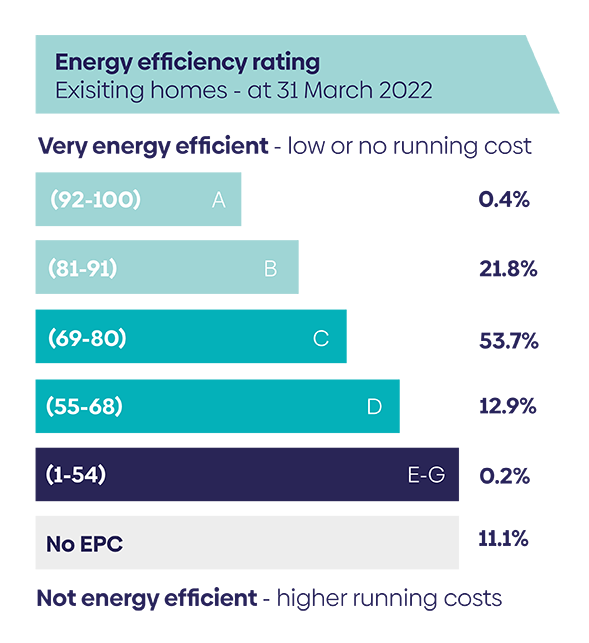 The 0.62 average SAP improvement relates to the higher level of energy efficiency of our new homes, incorporates some energy efficiency upgrade works to existing properties and takes account of the disposal of a small percentage of our least energy efficient homes.
The 0.62 average SAP improvement relates to the higher level of energy efficiency of our new homes, incorporates some energy efficiency upgrade works to existing properties and takes account of the disposal of a small percentage of our least energy efficient homes.
Where we don’t hold an externally lodged EPC we still hold the SAP data to help develop and target our energy efficiency activity.
Aligns with SDG goals:

(those completed in the last financial year).
Of the new homes we delivered during 2021/2022, 97.86% have an EPC rating of B and we are committed to continuing to build to this standard, as well as introducing the Environmental Impact Rating (EIR) of B or above as a consideration in the appraisal stage of the planning process. The Group also operates a voids disposal, stock option appraisal and land enhancement programme which generated proceeds of £16.3 million in 2021/22. The proceeds from the disposal programmes will be reinvested into future sustainable developments.
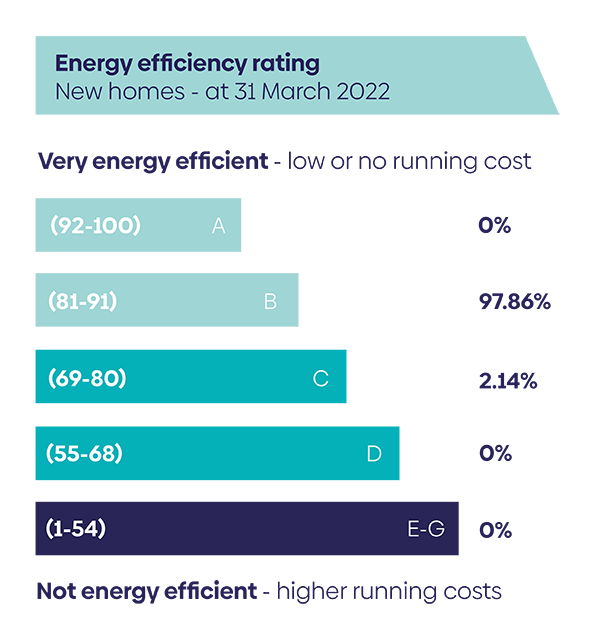
Aligns with SDG goals:
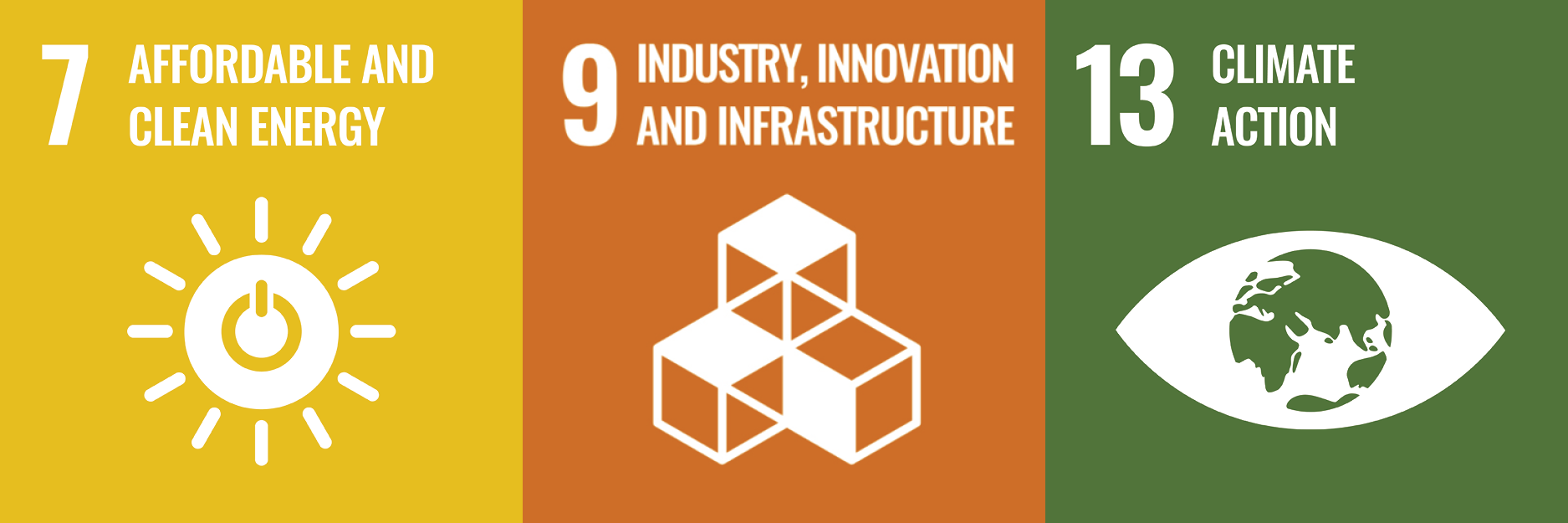
During 2021-22 our* greenhouse gas emissions were as follows:
Scope 1 (includes emissions from the mains gas for our hubs, depots and communal residential schemes, our operational vehicle fleet, and our plant and equipment fuel to deliver our services): 4,901 tCO2e
Scope 2 (purchased electricity for our hubs, depots and communal locations): 1,586 tCO2e
Scope 3 (includes our housing stock regulated emissions (EPC data, excluding domestic white goods and for example, portable in-homes appliances), emissions from our supplied electricity transmission and distribution losses, the electricity supplied by our landlords to us at sites we lease, colleagues’ home working, and our colleagues’ vehicles used for business related travel (grey fleet), and excludes personal commuting): 62,689 tCO2e
*Figures include EBHT but exclude C&C
 Whilst there has been a small (1.1%) increase in total emissions since 2019-20 (before the COVID-19 pandemic), the emissions for EBHT have also been included for the first time in the 2021-22 figures. However, relative to the number of properties we own and manage, emissions have reduced by 13.3% over the same period.
Whilst there has been a small (1.1%) increase in total emissions since 2019-20 (before the COVID-19 pandemic), the emissions for EBHT have also been included for the first time in the 2021-22 figures. However, relative to the number of properties we own and manage, emissions have reduced by 13.3% over the same period.
Aligns with SDG goals:
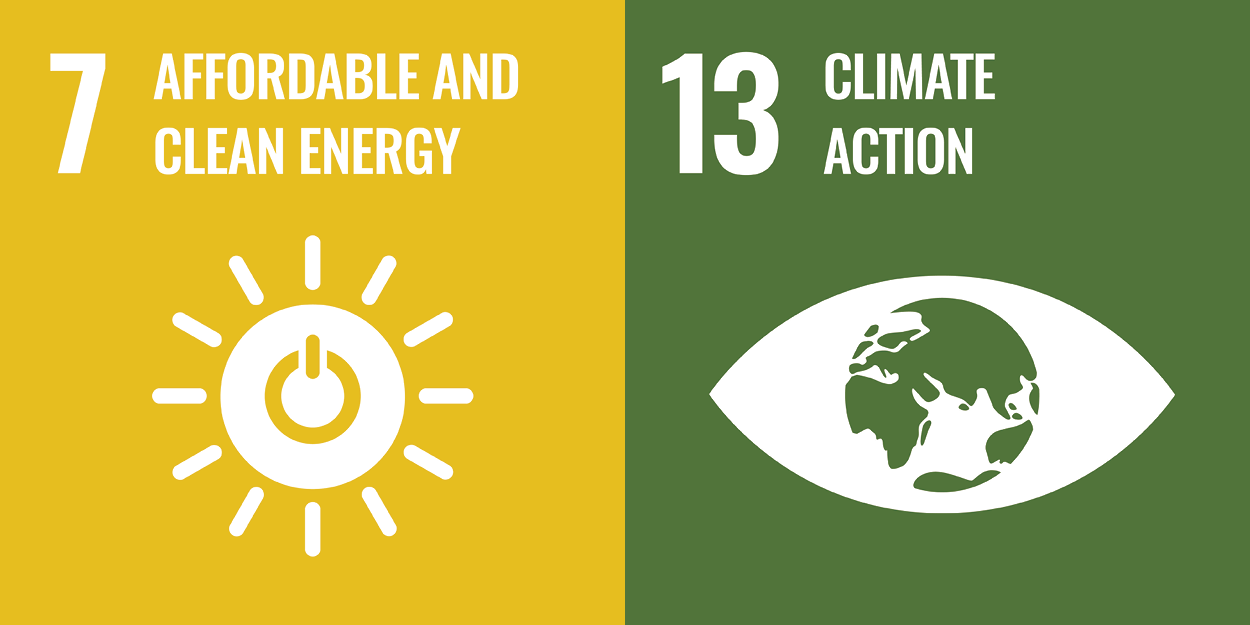
C17 – What energy efficiency actions has the housing provider undertaken in the last 12 months?
During 2021/22 we continued to adopt a ‘virtual first’ approach to working for non-trades staff, reducing the need for employees to travel for business purposes. Our grey fleet mileage was 61% lower in 2021/22 compared to the pre-pandemic baseline year of 2019/20*.
We continued to ensure office space is used efficiently and building controls are optimised to match occupancy rates. Through our Right Spaces, Right Places plan our corporate real estate has reduced by 26,000 square feet since 2018, and energy consumption at our offices was 27% lower last year than pre-pandemic (2019/20)*.
Utilising data from the telematics systems fitted to fleet vehicles to assess driving efficiency, we have been able to identify and correct poor driving practices and reward efficient driving. Every driver now goes through a formal, externally accredited driver training programme that includes an eco-driving module. In addition, speed limiters have been fitted to all fleet vehicles and route optimisation software is used. The annual mileage driven per van has reduced from approximately 17,000 in 2020-21 to 12,500 last year*.
We have also upgraded the boiler plant at two housing schemes with high-efficiency models and consolidated our IT storage and servers, relocating a number of them from one of our own office sites to more energy efficient, external datacentres. Additionally, we have continued to procure certified renewable energy for our corporate estate.
*Excludes EBHT, as this part of the organisation has been included in the Streamlined Energy and Carbon Report (SECR) for the first time this year.
Actions planned for 2022/23 include:
- Undertaking comprehensive energy modelling of our stock and developing delivery plans to meet our initial energy efficiency target of EPC C for all stock where practicable before 2030
- Producing a sustainability roadmap, which will include medium- and long-term carbon emissions reduction targets for our housing stock and business operations
- Continuing to rationalise office space to ensure it meets the needs of the business whilst further promoting virtual working and increasing the flexible working options for our colleagues
- Carrying out a pilot project to install solar photovoltaic systems at a number of properties in Dorset, including a housing scheme where the PV panels will feed electricity into the communal areas
- Producing a 5-year fleet strategy to ensure our operational vehicles remain fit for the future, incorporating measures to green the fleet by improving fuel efficiency and reducing carbon emissions where possible.
Aligns with SDG goals:

This year, we’re carrying out a new climate change risk assessment to identify those properties at increased flood risk and increased risk of overheating. In addition to this, our new developments will comply with the new Part O of the Building Regulations.
Aligns with SDG goals:
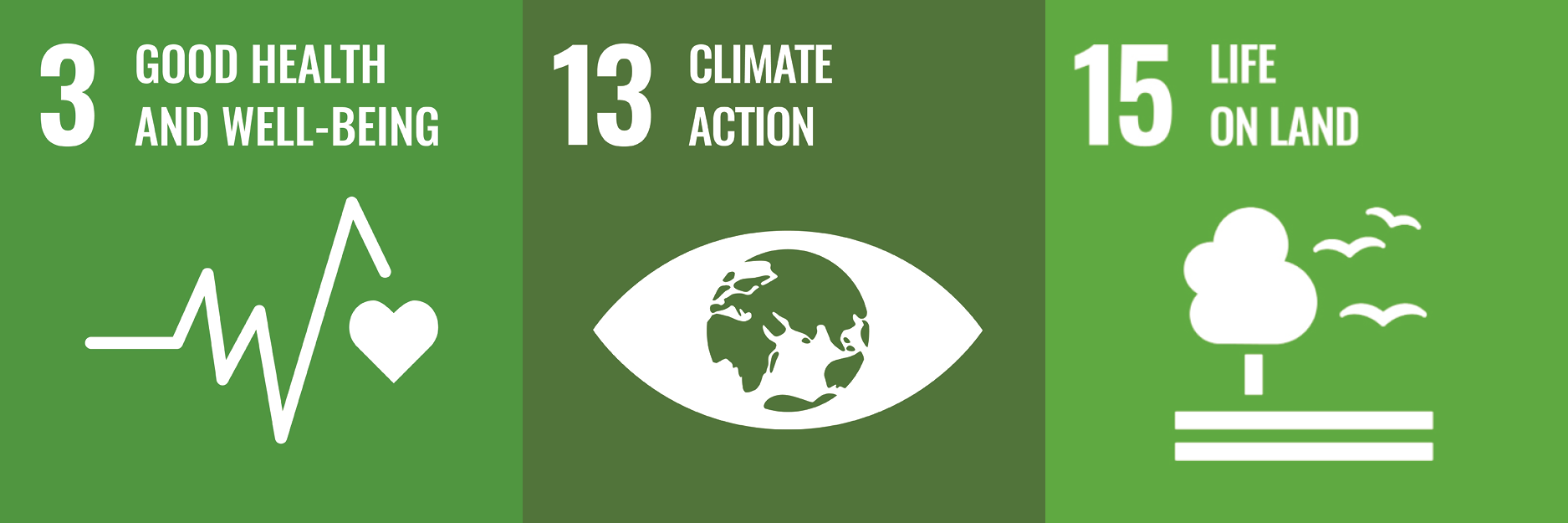
Information is provided on Aster's website, social media channels and through regular customer communications including a monthly newsletter, on how to reduce energy usage and costs, the correct use of heating systems, and how to avoid damp and mould.
Guidance is also provided in the welcome pack for new tenants so they are informed in their new home.
Aligns with SDG goals:

Ecology
T7
C20 – How is the housing provider increasing Green Space and promoting Biodiversity on or near homes?
We are committed to minimising the impact of housing on the environment where we can. Our neighbourhood enhancement project continues to provide communal recycling facilities within our communities.
A new wildlife and ecology procedure has been developed to ensure we continue to comply with wildlife-related legislation, along with a new training module for operational staff. A pilot rewilding project is being carried out in Wiltshire with Places for Nature.
Through our volunteering programme our colleagues carry out beach cleans , estates clear-ups and conservation activities across our communities.
We’ve been working with a number of communities to enhance the green space and biodiversity with the help of a local social enterprise. We remain a founding member of the Good Homes Alliance (GHA) Pathfinder Network. We’re working with this network to facilitate housing associations to adopt enhanced sustainability, quality, health and performance standards for new housing developments. As with the GHA Pathfinder Network, this will be achieved through sharing best practice, creation of new resources and guidance, and conducting original research and demonstration projects.
C21 – Does the housing provider have a strategy to actively manage and reduce all pollutants? If so, how does the housing provider target and measure performance?
We have an ISO 14001-certified environmental management system (EMS). As part of this, we have mapped out and evaluated our environmental impacts, including the ways we create, or have the potential to create, pollution. This helps us put appropriate controls or ways to reduce these impacts into action.
Our EMS includes procedures covering how we manage our wastes, including hazardous wastes such as certain paints, how we prepare for and respond to environmental emergencies such as spills of fuels and chemicals, and how we operate our 34 sewage treatment works, which are our biggest environmental risk.
We have set a number of targets to improve our environmental performance which we actively track. We closely monitor the effectiveness of the measures we have in place through a programme of internal audits and a twice-yearly assessment by our UKAS-accredited external auditors.
Aligns with SDG goals:

Resource Management
T8
C22 – Does the housing provider have a strategy to use or increase the use of responsibly sourced materials for all building works? If so, how does the housing provider target and measure performance?
Through our procurement process we responsibly source materials where possible, for example we specify FSC-certified timber for our development sites. Whilst we do not currently have in place a formal strategy on responsible sourcing in place, this is something we are looking to develop in the future.
C23 – Does the housing provider have a strategy for waste management incorporating building materials? If so, how does the housing provider target and measure performance?
During the past year we have engaged a waste broker to help us manage our waste more effectively and improve our compliance with waste-related legislation. We have set zero waste to landfill and 95% waste recovery targets, which we have already been achieved for all wastes with the exception of asbestos.
Going forward we will look to identify ways to reduce the quantity of waste we produce, and will set a waste minimisation target.
C24 – Does the housing provider have a strategy for good water management? If so, how does the housing provider target and measure performance?
Over the next year we will be developing plans to improve the water efficiency of both our homes and our operations. As a first step to help us to identify water savings for our schemes, offices and depots we have engaged a broker to carry out validation checks on our water bills and consolidate our billing.
This will mean that we will be able to monitor our water consumption more easily and identify those sites where consumption is higher than expected, so we can put in place appropriate efficiency measures at these sites.
Aligns with SDG goals:
